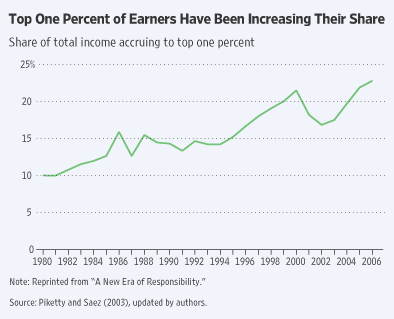The White House says its goal is simple "fairness."
That may be, as they understand fairness. But Figure 9 makes it clear
that for the top earners, there will be blood. This presidency is going
to be an act of retribution. In the words of the third book from Mr.
Obama, "it is our duty to change it."

Daniel Henninger is deputy editor of The Wall Street Journal's editorial page.

